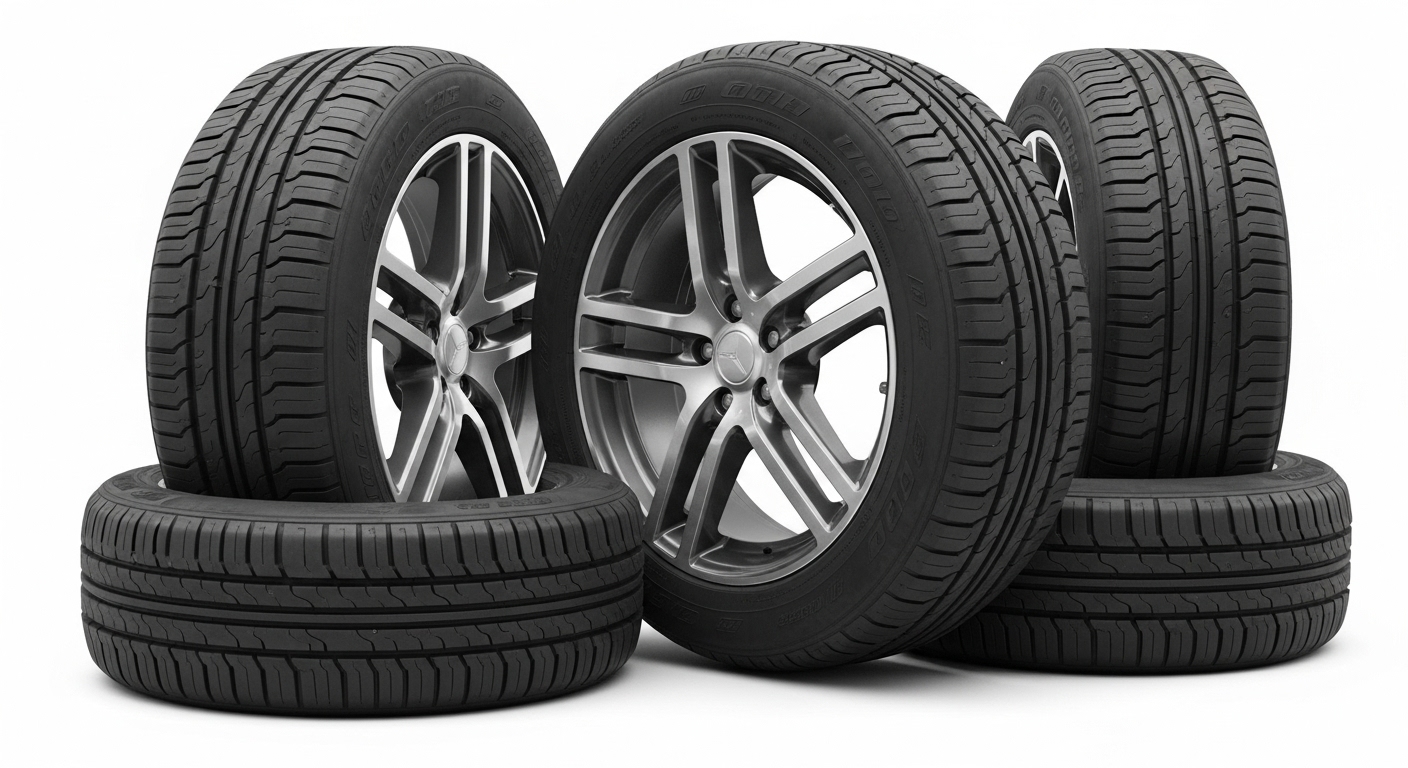In today’s fast-paced world, vehicle maintenance is no longer just about keeping your car running—it’s about ensuring safety, longevity, and performance. One of the simplest yet most overlooked aspects of car care is tire rotation. Many drivers underestimate how much this small, routine task impacts their vehicle’s handling, fuel efficiency, and overall lifespan.
This article explores how often you should rotate your tires, why it matters, and how regular tire maintenance contributes to a smoother and safer driving experience.
What Does Tire Rotation Mean?
Before understanding how often you should rotate your tires, it’s important to know what tire rotation actually involves. Tire rotation is the process of moving your tires from one position on your vehicle to another—typically from front to rear or side to side.
The goal is to ensure even tire wear. Because each tire experiences different levels of friction, steering, and braking pressure, they don’t all wear down at the same rate. By rotating them periodically, you balance out this wear, helping your tires last longer and perform better.
For example:
-
Front tires often wear faster because they handle steering and more braking force.
-
Rear tires may experience less wear but still need rotation to maintain balance.
Why Tire Rotation Matters
Regular tire rotation is not just a suggestion—it’s essential to vehicle health and safety. Here’s why it matters:
1. Extends Tire Lifespan
Even wear means longer-lasting tires. Neglecting rotation can cause uneven tread wear, forcing you to replace tires prematurely—a costly mistake easily avoided with routine maintenance.
2. Improves Safety and Handling
Uneven tires can affect traction, especially on wet or slippery roads. Rotated tires provide better grip, improving your vehicle’s stability and braking performance.
3. Enhances Fuel Efficiency
Tires with uneven wear cause more rolling resistance, which forces your engine to work harder and burn more fuel. Regular rotations help maintain optimal tread depth and better fuel economy.
4. Protects Your Investment
Your tires are one of the most expensive consumable parts of your car. Rotating them regularly ensures you get the most value out of your investment.
How Often Should You Rotate Your Tires?
The general rule of thumb is to rotate your tires every 5,000 to 7,500 miles (about every 8,000 to 12,000 kilometers). However, this can vary based on your vehicle type, driving habits, and tire design.
Here’s a quick breakdown:
-
Every 5,000 miles: Recommended for front-wheel drive (FWD) and rear-wheel drive (RWD) vehicles.
-
Every 6,000–7,500 miles: Works well for all-wheel drive (AWD) vehicles where all tires experience more equal wear.
-
With every oil change: Many experts suggest aligning tire rotation with your oil change schedule—it’s an easy reminder.
For the most accurate schedule, always refer to your vehicle’s owner’s manual. Manufacturers often provide rotation intervals specific to tire size, weight distribution, and performance requirements.
Different Tire Rotation Patterns
The best way to rotate your tires depends on your car’s drivetrain—front-wheel, rear-wheel, or all-wheel drive.
1. Front-Wheel Drive (FWD):
-
Front tires move to the rear on the same side.
-
Rear tires move to the front but switch sides (left to right).
2. Rear-Wheel Drive (RWD):
-
Rear tires move to the front on the same side.
-
Front tires move to the back and switch sides.
3. All-Wheel Drive (AWD):
-
Tires are crossed diagonally—front right to rear left, and vice versa.
If your tires are directional (designed to rotate in only one direction), rotate them front to back on the same side.
Signs That It’s Time to Rotate Your Tires
Even if you haven’t hit the mileage milestone, there are several signs that it’s time for a tire rotation:
-
Uneven tread wear: One or more tires look more worn than the others.
-
Vibrations while driving: Particularly at higher speeds.
-
Pulling to one side: Indicates imbalance or uneven wear.
-
Increased road noise: A common symptom of irregular tire wear.
Catching these signs early can prevent costly repairs and help maintain a smoother ride.
What Happens If You Don’t Rotate Your Tires?
Neglecting tire rotation might seem harmless, but the long-term effects can be serious.
1. Premature Tire Wear: Tires can lose tread unevenly, shortening their lifespan.
2. Reduced Safety: Uneven tires affect traction and braking, increasing accident risk.
3. Poor Performance: Your car may handle poorly or drift to one side.
4. Suspension Damage: Extra strain on your suspension system due to imbalance.
Skipping rotations doesn’t just shorten tire life—it can compromise your entire driving experience and cost you more in fuel, repairs, and replacements.
Professional vs. DIY Tire Rotation
You can rotate tires yourself if you have the right tools (jack, jack stands, wrench, and torque wrench), but most people prefer professional service. A mechanic will not only rotate your tires but also check for alignment issues, tread depth, and tire pressure—all in one visit.
If you do it at home, make sure to:
-
Follow the correct rotation pattern for your drivetrain.
-
Tighten lug nuts properly (not too loose, not over-torqued).
-
Check tire pressure afterward.
Factors That Affect Tire Rotation Frequency
While the “every 5,000–7,500 miles” rule is reliable, several factors might require you to rotate your tires more frequently:
-
Heavy Loads: Carrying extra weight or towing a trailer accelerates tire wear.
-
Rough Roads: Frequent driving on gravel or uneven terrain wears tires unevenly.
-
Aggressive Driving: Hard braking or sharp cornering causes faster tread wear.
-
Performance Tires: High-performance or low-profile tires may need more frequent rotation.
By paying attention to your driving conditions, you can adjust your tire rotation schedule accordingly.
Tire Rotation and Wheel Alignment: Are They the Same?
While related, tire rotation and wheel alignment are not the same.
-
Tire rotation changes the position of the tires to ensure even wear.
-
Wheel alignment adjusts the angles of your wheels to ensure they’re perpendicular to the road and parallel to each other.
If your car drifts to one side or your steering wheel vibrates, you may need both rotation and alignment for optimal performance.
Benefits Beyond Maintenance
Rotating your tires regularly offers benefits that go beyond simple wear management. It’s about preserving your car’s overall health and performance. Consistent rotation improves ride comfort, reduces noise, and enhances braking stability—qualities that make every drive safer and more enjoyable.
Moreover, regular maintenance like this shows responsibility and care—traits that can even increase your car’s resale value. A well-maintained vehicle always stands out to buyers and appraisers.
Looking Ahead
So, how often should you rotate your tires? Ideally, every 5,000 to 7,500 miles—or sooner, depending on your driving habits and road conditions. This simple, often-overlooked step can save you hundreds of dollars in tire replacements, improve your car’s safety, and ensure a smoother ride for years to come.
In an era where vehicles are smarter and more efficient, maintaining them properly is key to maximizing performance. Regular tire rotation may seem small, but it’s one of the smartest investments you can make in your vehicle’s longevity and your safety.

